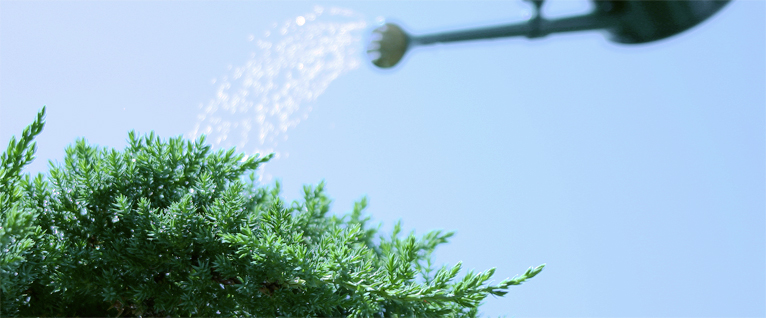Watering Your Bonsai
Watering plays a crucial role in providing successful care for your bonsai tree. Newcomers to the art of bonsais usually lose their first plant to improper watering. Some bonsai experts say watering is a skill that is mastered over a lifetime. To begin in the right direction for proper watering, the bonsai should be checked daily for soil moisture. To check the moisture you can use a Moisture/Light meter. If you do not own a moisture/light meter, a simple test to check whether or not your bonsai needs watering is to stick your finger or a wooden stick an inch or so down into the soil. If the soil feels or looks moist, you do not need to water the bonsai. If you are located in an unstable temperature area, soil moisture should be checked about twice a day. The goal of watering your bonsai tree is to provide moderate moister to the soil and the roots of the bonsai tree. The soil should not be dry or soaked. The amount of watering will vary depending on the size of the bonsai tree and the specific species of bonsai tree. Make sure you adjust your watering accordingly.
Overhead watering is the most natural way for a plant to receive water. By watering from the top of the plant you will be able mimic natural rain. When overhead watering, you will want to use a fine rose spray. The rose spray can be achieved by using a watering can or using the spray dial on your water hose. The ideal time for watering would be once a day in the morning. If your soil does need to be watered twice a day, then morning and evening would be the best times. Remember, with a little patience and focus you will be able to master the art of watering your bonsai tree in no time!





You must be logged in to post a comment.